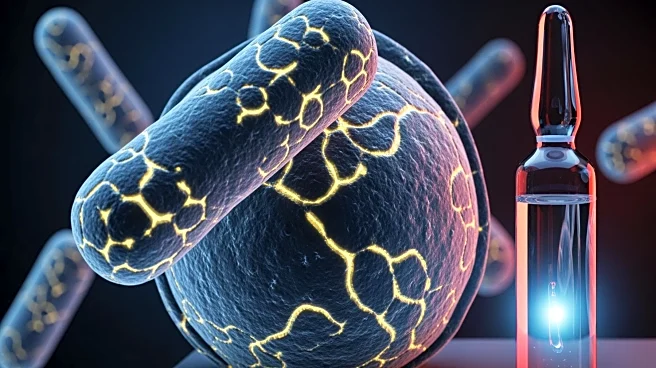What's Happening?
Researchers have discovered a new class of compounds, thiofrenomycins A-C, which show strong antibacterial activity against Neisseria gonorrhoeae, the bacterium responsible for gonorrhea. These compounds, derived
from Streptomyces sp. MM863L-181F9, exhibit a unique kalafungin-type pyranonaphthoquinone skeleton with a sulfide linkage. The discovery is significant as multidrug resistance in N. gonorrhoeae is becoming increasingly severe, limiting treatment options. The absolute stereochemistry of thiofrenomycins was determined using X-ray crystal structure analysis, and they demonstrate minimal inhibitory concentrations of 0.125–16 µg/mL against the bacterium.
Why It's Important?
The emergence of thiofrenomycins as a potential treatment for drug-resistant gonorrhea is a critical development in the fight against antibiotic resistance. Gonorrhea is a common sexually transmitted infection, and the increasing resistance of N. gonorrhoeae to existing antibiotics poses a significant public health challenge. The discovery of new compounds with effective antibacterial properties could lead to the development of new treatments, providing healthcare providers with more options to combat this infection. This advancement underscores the importance of ongoing research and innovation in the field of antibiotics, particularly as resistance continues to rise globally.
What's Next?
Further research and development are needed to fully understand the potential of thiofrenomycins as a treatment for drug-resistant gonorrhea. Clinical trials will be necessary to evaluate their safety and efficacy in humans. If successful, these compounds could be developed into new antibiotics, offering a much-needed solution to the growing problem of antibiotic resistance. The scientific community and pharmaceutical companies will likely focus on advancing this research, with potential collaborations to expedite the development process. Regulatory approval will be a critical step before these compounds can be made available for clinical use.












